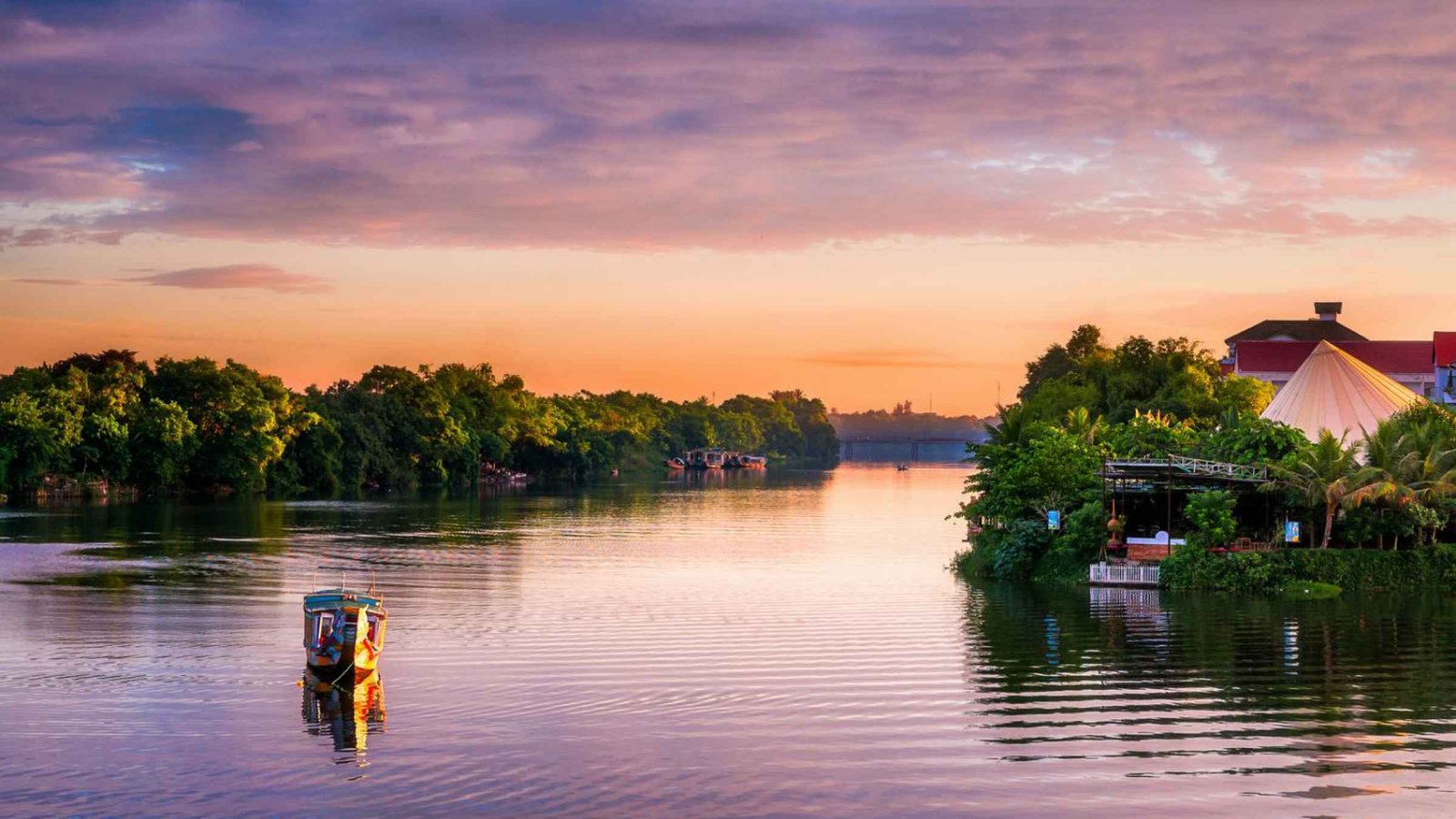Unveiling Vietnam’s Majestic Historical Jewel
Hue Imperial City, located in the central region of Vietnam, is a UNESCO World Heritage site and a testament to the country’s rich history and royal heritage. Also known as the Citadel of Hue, it served as the political and cultural center of the Nguyen Dynasty, the last imperial dynasty of Vietnam. The Imperial City is surrounded by fortified walls and a moat, and it houses numerous palaces, temples, and royal tombs. Visitors can explore the intricate architecture, ornate decorations, and serene gardens within the citadel complex. Highlights include the Thai Hoa Palace, the Forbidden Purple City, and the Tomb of Emperor Minh Mang. Hue Imperial City is a captivating destination that offers a glimpse into Vietnam’s regal past.
A Glimpse into the Past:
Hue, once the capital of the Nguyen Dynasty from 1802 to 1945, served as the political, cultural, and religious center of Vietnam. The Hue Imperial City was meticulously planned and constructed to reflect the harmony of Confucianism, Buddhism, and Taoism. It stands as a testament to the country’s royal heritage and is a captivating window into Vietnam’s imperial past.
The Citadel: A Royal Enclave:
At the heart of Hue Imperial City lies the Citadel, an expansive fortified complex that once housed the imperial court and its administrative functions. Enclosed within towering walls and a moat, the Citadel is a symbol of power and grandeur. Enter through the imposing Ngo Mon Gate, adorned with intricate carvings, and step into a world of regal magnificence.
The Imperial Enclosure:
Within the Citadel, the Imperial Enclosure takes center stage. This inner sanctum is home to the Imperial City, where the royal palaces and important ceremonial buildings are located. Imagine the opulence and splendor that once graced these grounds as you stroll through the expansive courtyards surrounded by meticulously landscaped gardens and ornate architecture.
The Forbidden Purple City:
Deep within the Imperial Enclosure lies the Forbidden Purple City, an exclusive area reserved for the ruling emperor and his immediate family. Although heavily damaged during the Vietnam War, ongoing restoration efforts have brought back its former glory. Explore the ruins and marvel at the remaining structures, including the Thai Hoa Palace and the Dien Tho Residence, which provide glimpses into the luxurious lifestyle of the imperial family.
Royal Tombs: Majestic Final Resting Places:
Venture beyond the Citadel to discover the royal tombs that dot the outskirts of Hue. These majestic final resting places were meticulously designed to reflect the personalities and tastes of the Nguyen emperors. Each tomb is a harmonious blend of traditional Vietnamese and imperial Chinese architectural styles, surrounded by lush gardens and serene landscapes.The most renowned tombs include the Tomb of Emperor Minh Mang, characterized by its imposing gateways and tranquil lakes, and the Tomb of Emperor Tu Duc, known for its poetic beauty and tranquil atmosphere. Explore these serene sanctuaries, paying homage to the emperors and appreciating the intricate craftsmanship that went into their construction.
Thien Mu Pagoda: Iconic Hue Landmark:
No visit to Hue Imperial City is complete without a visit to Thien Mu Pagoda, an iconic symbol of the city. Perched on the banks of the Perfume River, this seven-story pagoda is the tallest religious structure in Vietnam. Marvel at its elegant design, adorned with vibrant colors and intricate detailing. Take a moment to soak in the serenity of the surroundings and enjoy panoramic views of the river and countryside.
Cultural Immersion:
Beyond the architectural wonders, Hue Imperial City offers a myriad of cultural experiences. Witness traditional ceremonies, vibrant performances, and captivating traditional music at the Royal Theater. Immerse yourself in Hue’s culinary delights, savoring imperial dishes that were once exclusively prepared for the royal family. Don’t miss the chance to try the city’s famous “Bun Bo Hue,” a spicy beef noodle soup that will tantalize your taste buds.
Practical Information:
To make the most of your visit to Hue Imperial City, here are a few practical tips:
- Timing: Plan your visit during the early morning or late afternoon to avoid the midday heat and crowds. Consider spending a full day exploring the entire complex thoroughly.
- Guided Tours: Engage a knowledgeable guide or join a guided tour to gain deeper insights into the history, stories, and cultural significance of each site within Hue Imperial City.
- Transportation: Rent a bicycle or hire a local motorbike taxi (xe om) to navigate the vast complex, or opt for a leisurely boat ride along the Perfume River for a scenic approach.
- Dress Code: As a place of cultural and historical significance, it is advisable to dress modestly and respectfully, covering your shoulders and knees.
Conclusion:
Hue Imperial City stands as a testament to Vietnam’s imperial heritage, captivating visitors with its grandeur, architectural splendor, and cultural significance. Explore the Citadel, unravel the secrets of the Forbidden Purple City, and wander through the serene royal tombs. Immerse yourself in the rich cultural experiences and indulge in the culinary delights of this majestic destination. Hue Imperial City is a true gem that will transport you back in time, offering a glimpse of Vietnam’s royal past and leaving anindelible impression of its historical and architectural riches.

